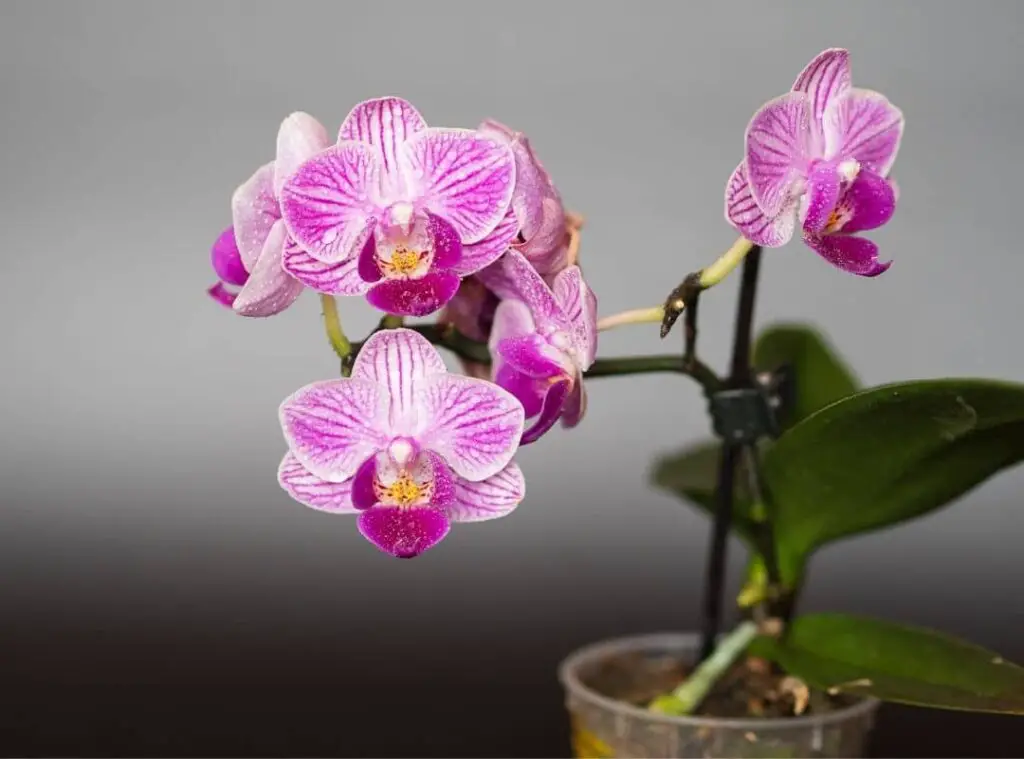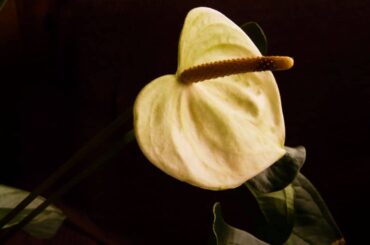How to treat orchid virus? Unfortunately there is no definite cure for orchid viruses. But you can prevent this horrible disease in many ways. In this article my aim is to inform you how to identify an orchid virus and how to prevent it.

What is an orchid virus?
Orchid virus is a pathogen induced condition which may obstruct the growth of the plants. This could take place due to several factors. For example, excess watering, poor aeration could be key factors here which would contribute to this condition.
The major concern when it comes to treating orchid virus is that you will not be able to eradicate this condition. That said, there are some care tips which you could practice to prevent this condition happening. There are numerous virus types which your orchids may be exposed to, and they could disrupt the overall growth of the plants and affect them badly in so many other aspects.
Virus is a biotic agent, and nobody can spot them to their naked eye when they are present on the plants. You could only observe them while using electron microscopes. Once you use the electron microscope, it would enable you to observe them in a magnified size. There are over 30 virus types which are known to infect the orchids worldwide.
Out of those, the virus called Odontoglossum ringspot virus (ORSV) and Cymbidium mosaic virus are regarded as the most extensive virus types as they exist in almost all regions. Further they can cause greater damages for the plants too. For example, they can badly impact the endurance of the plants, reducing the quality of the blooms which would ultimately result in lowering the economic value.
Not only that but also, they can weaken the plants, resulting in distortion and malformation too. Further they can distort the stem and the leaves of the plants too. These symptoms may vary from genus to genus.
Further there could be some orchids which don’t show any symptoms, but which may suffer from viruses as well. Besides, keep in mind that once your orchids encounter virus attacks, it would make the plants susceptible to other pests and diseases as well.
How are viruses transmitted to orchids ?
There are several ways viruses get transmitted to orchids. Firstly, viruses could transmit from infected plants to non-infected plants. To be more precise, if you use tools on healthy orchids which you had used on infected plants without disinfecting, it will transmit the virus.
Further rubbing plant leaves is another way where the virus transmits can take place. Moreover, virus transmission can take place during transportation too. Finally pollen transfer is also considered as a way of virus transmission. Viruses are small particles which can invade the plants through the wounds on the plants.
In addition to these ways, sucking and chewing pests would also contribute to virus attacks in the plants. For example, aphids are well known for their ability to transmit viral infections for orchids.
Additionally, pests such as thrips, mealybugs, scales can also pave the way for virus transmission of the orchids. Last but not least, grasshoppers, beetles can also transmit viruses to the orchids.

How do I know if my orchid has a virus?
You could easily identify when your orchids are suffering from a virus as when they go through a viral attack, they may usually develop some symptoms to show that. For example, you could spot your orchids carrying chlorotic and necrotic spots, streaks etc.
Those lesions , spots would develop in various sizes usually. Furthermore, developing yellow stripes is yet another common symptom of orchids viral infestations. Further they may also develop circular ringspots as a result of virus infections. Moreover, there are few orchid types which emerge with leaves with purple blotches once they encounter a viral infestation. Chances are that some of the orchids may show downward leaf curling.
When it comes to orchid blooms, they would also emerge with necrotic spots and streaks once they go through a virus attack. Besides, chances are that they may experience a color break too. Literally once the virus invades the plant, they would feast on almost all of the plant’s parts.
Having said that, it is very unlikely that Cymbidium flowers develop any symptoms of viral attacks. Orchids may experience a wide array of symptoms once they contact a virus. Those symptoms would vary from one plant to the other and chances are that you cannot distinguish sometimes also.
Further there may be occasions where the plants would not exhibit symptoms of virus attacks. However, those plants’ health would still deteriorate. As you may understand there are numerous symptoms which orchids can show up when they experience a viral attack.
Further they may sometimes tend to look normal while being asymptomatic and it would make it harder for you to identify whether any viral attack has taken place. On top of that the possibility to vary symptoms depending on the plant species and on environmental conditions make it even more difficult to identify the viral infections.
How to treat orchid virus?
To answer the question on how to treat orchid virus; currently there are no treatments to completely eradicate this condition. However, experts have tried to produce genetically resistant plants for these viral infections.
However, prevention is also better than treating them and all you have to do is obstruct them in entering your growing areas at first. That said, it won’t be an easy task to do, especially when we consider asymptomatic plants.
So, it is always best to purchase plants from certified producers so that you would not bring these nasty little creatures to your gardening area. When you purchase the orchids, you need to pay good attention to the mother plant as they need to be virus free and healthy.
However, if there are viruses present, you need to immediately discard the plants. Next you need to isolate the suspect plants. That way, you could avoid further transmission of the virus. Keep in mind that if there are older plants, there will be a high probability for the virus to invade them.
So, to sum up, once your orchid goes through an infection what you could ideally do is discard them and avoid a further transmission of the virus attack.

How do you get rid of orchid virus?
As aforesaid, it is critical that you take preventive measures so that your plants may not go through the viral infections. In that context, Sterilizing the cutting tools is very important. As you may already be aware, virus transmission could take place via plant to plant if you end up using disinfected tools.
Once an infected plant sap gets in contact with a healthy plant’s sap, they would also experience this condition. So, to sterilize the tools, you may use a hot flame to sterilize the tools once you utilize them for any cutting purposes of the plants. Once you use this method, you need to sterilize them for about 15-20 seconds on each side.
In addition to sterilizing, you may also consider repotting the plants too. Once you repot the plants, it would give them fresh growing conditions which would be quite beneficial for the healthy and vigorous growth of the plants. Further when you interact with the plants, I suggest you wear latex gloves and then dispose of them so that it would avoid paving the way for a virus transmission.
Ensure that you maintain the cleanliness and sterility of the soil mix too. Further disinfect the pots before you use them for the potting purposes too. To do that you may wash them with soap and then soak them in a bleach solution. After that, again soak them in Physan mix for about one hours’ time.
However, when you do this ensure that you refer to the labeled instructions. If you have clay pots to disinfect, I don’t recommend doing this method and the best would be practice the disinfection routine which you do for the plastic pots. To explain further on this, you need to bake them in an oven at 400 degrees Fahrenheit for a couple of hours.
When you do the routine activities, be cautious when you rub the leaves and then touch other plants as that could also transmit virus from an infected plant to a healthy plant. In addition to that make sure that you utilize all sterile tools when cutting inflorescences as well. Ideally you need to use a sterile single edged razor blade when doing this task.
After that ideally you need to discard those. However, if you wish to use shears, I recommend sterilizing them between each inflorescence. Don’t ever remove the inflorescence manually.
Try to keep your hands off from the plants as much as you can. Further when you introduce a new plant to your garden ensure that you first quarantine them and then add to your garden collection.
Moreover, ensure that you keep your orchids, garden insects and pests free. If you don’t do that it would be easier for the virus to invade your precious orchids. When you complete interacting with the plants, you need to take all the leftovers such as plant debris, old potting materials, pots and stakes and dispose of them.
After that wash your hands properly. Further you may be tactful in placing new newspapers around the plants as well. One might find these active as time consuming. However, it would be worth practicing these so that you will not have to deal with these unwanted , troublesome virus infestations.
Read Next: How To Treat Orchid Crown Rot ?





